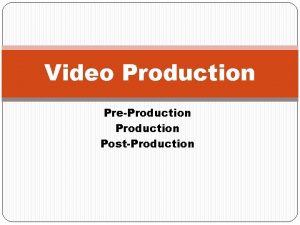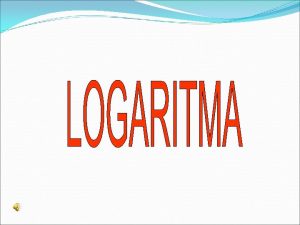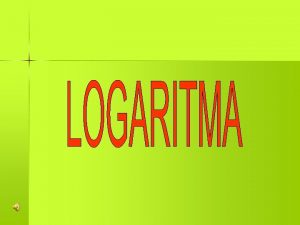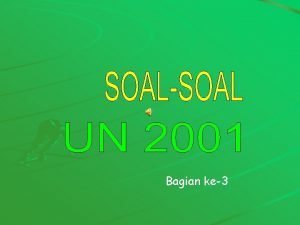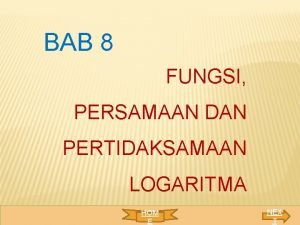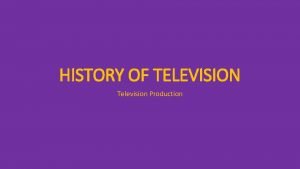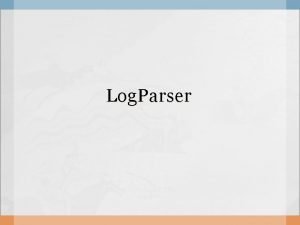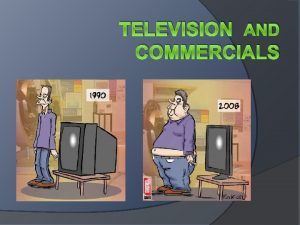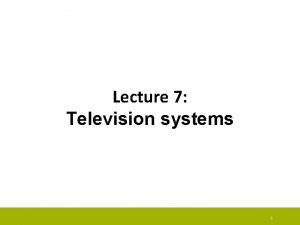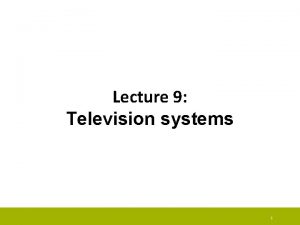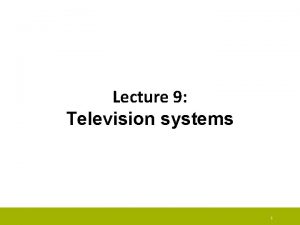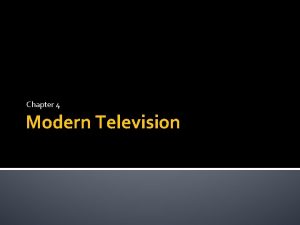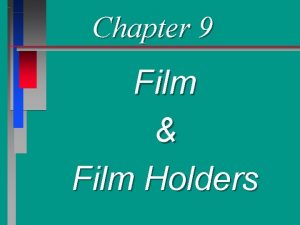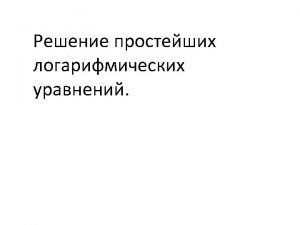Pre Production in Film and Television Log LineOneliner










- Slides: 10

Pre Production in Film and Television

Log Line/Oneliner Definition The log line or one-liner is a very concentrated summary of the concept. It is usually one or sometimes two sentences long. The purpose of the one-liner is to make the premise of the production very clear in the mind of those who are going to be involved in producing it. However, the log line does not give away the ending. Log lines may contain the following: • • the protagonist (not by name) their goal the blockage or antagonist (also not by name) what is at stake (e. g. the future of the world).

Outline/One Page Synopsis The outline often accompanies the log line as part of the process of pitching a concept to studio executives or film finance companies. Often includes: • the key characters and their goals, including protagonist and antagonist • the conflict and what is at stake • the setting • the opening scene • the first turning point or disruption • the midpoint climax • the major climax • the resolution.

The Treatments read as though we are watching the production, and may include: • the title • the opening scene as it will actually play • the disturbance to normality that begins the story • each major scene and its climactic turning point, including the main climax • the resolution • snippets of dialogue, but only key lines character descriptions — usually just a few words immediately after their name the first time they

The Script • A script is the written version of a film or television program. • The script is the whole story set out on paper, including all dialogue, acting directions and occasionally some limited camera directions. • The script represents the narrative ready to be filmed. • (I have uploaded a detailed description of how to format a film or television script to the CLE. I have also included an example. )

The Storyboard • Scene number is often written at the top of the sequence. • Shot number is often written underneath each frame. • Shot sizes are often written in block capitals underneath each frame and next to shot number. • The action in each scene is briefly described, usually in only one sentence. • Dialogue (if required) is written in the manner of a stage script. Characters’ names are usually given in capitals, and dialogue is written in lowercase. • Technical details about how the shot will be achieved may be required. This will include details about framing, lighting, camera movement and so on. • Sound effects are indicated last, usually in capitals.


Shooting Script/Camera Script A shooting script is a set of plans or instructions to the camera crew as to how to cover. • scenes in a script. • a four or five column script, with column one giving the shot number, column two showing shot size, column three describing what is to be filmed and column four indicating the audio and column five for director's notes and acting instructions. • a brief description of numbered shots. • filming directions.


Activities Choose two of the following four activities to complete The activities are for films specifically. If you are not creating a film for your production, complete questions 3 and 4 and tailor them to meet the requirements of your media production. 1. 2. 3. 4. Starting with your idea for your own production, write an outline and treatment including the key features explained above. Suggested lengths for a short student film are 10 words for the outline and 400 words for the treatment. Write the script for your own production. The rule of thumb for scriptwriting is that one page is equivalent to approximately one minute of screen time. Construct a storyboard for a key sequence from your film. This could be the opening sequence, or an action scene. It could be an artistically complex scene. Follow the conventions of storyboarding as outlined above (see The storyboard). Visualise a scene from your film and prepare a shooting script that contains detailed directions for the filming crew. Follow the conventions for shooting scripts as outlined above (see Shooting script/camera script).
 Production pre production post production
Production pre production post production Pre production planning for video film and multimedia
Pre production planning for video film and multimedia Jika log 2 = 0 301 dan log 3 = 0 477
Jika log 2 = 0 301 dan log 3 = 0 477 2 log 18
2 log 18 Nilai dari 5log 10-5log 2 adalah
Nilai dari 5log 10-5log 2 adalah Diketahui log 3 = a dan log 2 = b maka log 18 adalah
Diketahui log 3 = a dan log 2 = b maka log 18 adalah Diketahui log 2 = 0 301 dan log 5 = 0 699
Diketahui log 2 = 0 301 dan log 5 = 0 699 Nilai logaritma dari ³log243 adalah
Nilai logaritma dari ³log243 adalah Jika log 3 = 0 477 dan log 5 = 0 699 nilai dari log 45 =
Jika log 3 = 0 477 dan log 5 = 0 699 nilai dari log 45 = Penyelesaian pertidaksamaan log(x-4)+log(x+8) log(2x+16)
Penyelesaian pertidaksamaan log(x-4)+log(x+8) log(2x+16) Anime#
Anime#

